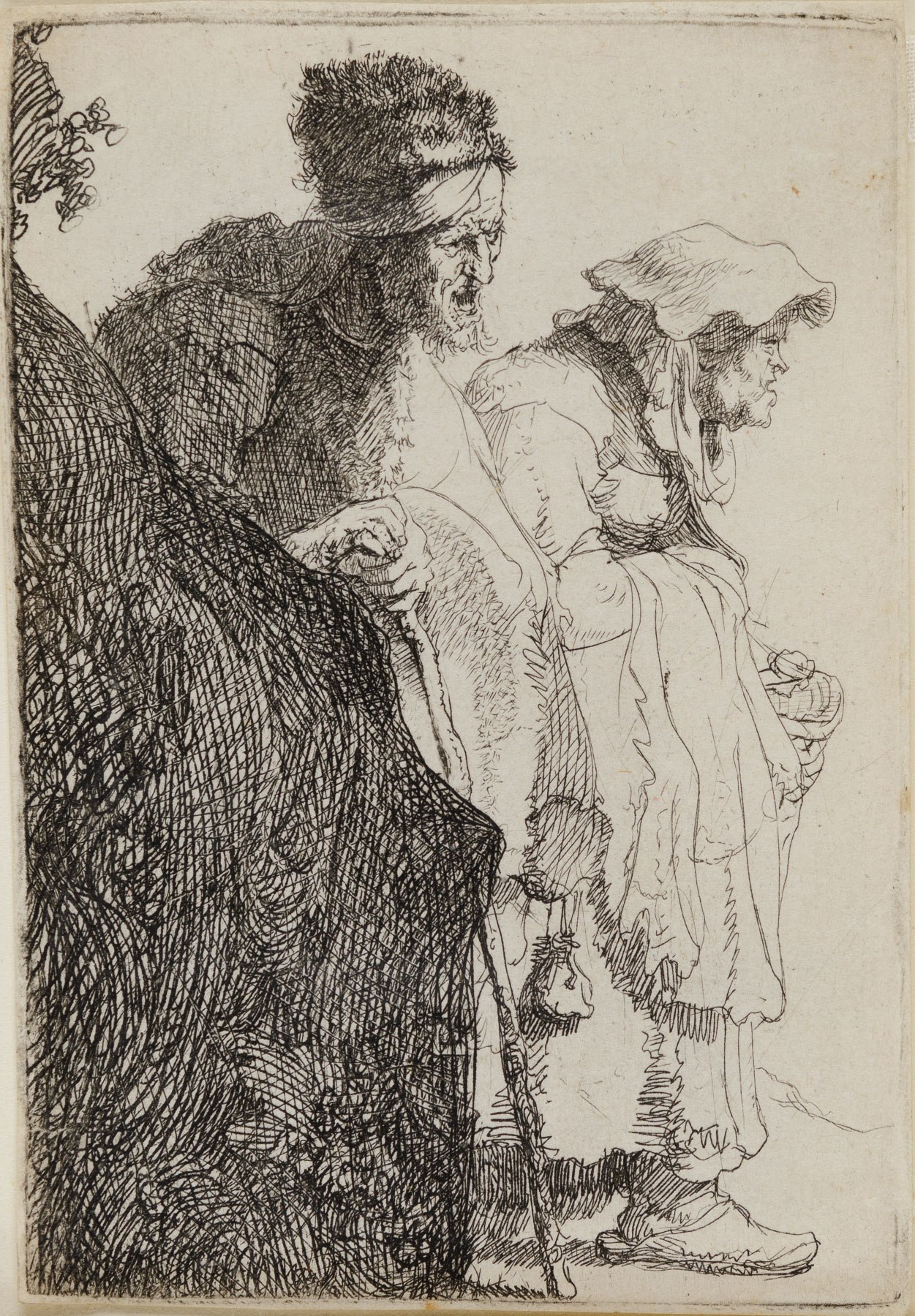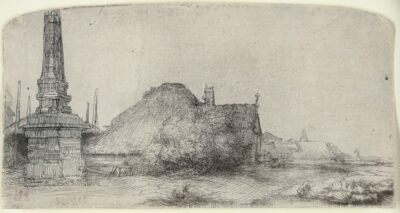Beggar Man and Woman Behind a Bank
Rembrandt Van Rijn
Beggar Man and Woman Behind a Bank
etching & engraving
1630
An original Rembrandt Van Rijn etching & engraving .
1630
Original etching, engraving and drypoint printed in black ink on laid paper.
A superb 17th century/lifetime impression of Bartsch’s ninth and final state, Usticke’s seventh state of seven, New Hollstein’s ninth state of nine, of this rare etching (characterized by G.W. Nowell-Usticke in his 1967 catalogue Rembrandt’s Etchings: States and Values as a “very scarce plate”, and assigned his scarcity rating of “RR-” [50-75 impressions extant in that year]), printed after the addition of the cross hatching to the man’s right shoulder, the line defining the right elbow of the woman, and the lines giving the bank a straight outline.
Catalog: Bartsch 165 ix/ix; Hind 13; Biorklund-Barnard 30-5, Usticke 165 vii/vii; New Hollstein 51 ix/ix.
3 13/16 x 2 11/16 inches
A beggar and a beggar woman emerge from behind a bank. They appear to be in conversation, rather loud, it seems, as the man has his mouth wide open. Rembrandt portrayed the couple with a keen eye for detail. The man leans his hands on a stick and wears a fur cap over a headscarf. The sun casts a shadow on his chest. The woman’s headgear is striking, as is the pouch that hangs halfway down her skirt. The rough bank acts as a repoussoir, but in early impressions other lines, incompletely removed, are visible under the crisscross of lines, which suggests that this passage was put there primarily to cover up an earlier image. Here we see Rembrandt making a virtue of necessity.
This work, which dates from around 1630, belongs to the group of beggars and street folk, and it is the first etching in Rembrandt’s oeuvre that he developed in a large number of states. We can only guess at Rembrandt’s deeper reasons for creating so many etchings of beggars. Whatever his motivation may have been, however, it soon became clear that the public was delighted with this new genre. Scholars have often interpreted the series as a deeply felt commentary on social injustice and a gesture of solidarity with the poorest of the poor.





